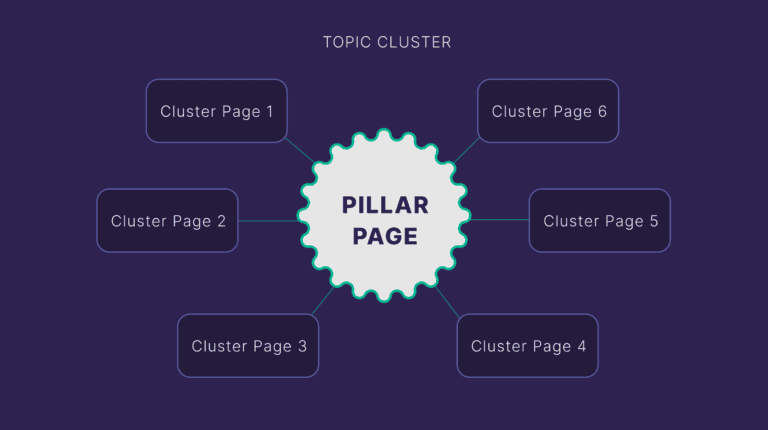
Introduction: What are Pillar Pages?
It is therefore very important to have a good SEO plan from time to time to increasing its online presence. One of the most promising tools still on the rise is what is called the pillar page – this is more of an approach to content organisation that aims to help optimise your website and improve user experience.
A pillar page is focused on specific topics and connects to and from other related pages and vice versa. In this article, you will learn what the pillar page is, how it operates, and how it affects the SEO metrics. Now wouldn’t it be helpful if we take a closer look at how it is created and how it is utilized well towards improving the site’s standard rankings and helping the audience as well?
Explanation of What a Pillar Page Means in SEO
Pillar articles are types of supporting content articles for broad themes with links to deeper content in cluster content articles. Different from typical articles where topics are delineated in simple, brief sections, these pages give a user a fundamental view of the subject. For instance, the main pillar page dedicated to ‘Digital Marketing’ may have links to cluster articles with topics such as SEO, Social media, and Email Marketing. This interconnected structure assists the search engines to understand your website’s structure of operation and its importance. As a form of structure of content, pillar pages improve usability as users get to locate content quicker and increasing interaction.
Why They Are Worthy: Pillar vs. Regular Web Page
This is in contrast to pillar pages of any type, which vary from other forms of Web pages by their scope, function, and design. As discussed before, regular pages are normally devoted to certain niche topics, while pillar pages give a top-level view of a given topic. For instance, whereas a typical page could be “How to Market your Business via Instagram”, its corresponding pillar page can be “Social Media Marketing”.
Moreover, the specified type of pages contains a large number of links to other articles within the site and can be considered as a kind of reference point. Akin to this improves the experience of the user while at the same time informing the search engine of the importance and relevance of your content.
Pillar Pages and effectiveness of its integration into the overall layout of the site
Organic site architecture is vital in SEO, and pillar pages stand our case by bringing an essential organization structure. It’s easy to understand that by grouping content around a pillar content, it becomes easier for a spider to crawl and index your website. It also helps in equitable distribution of link equity so that relevant webpage gets optimal amount of authority. Users are also able to navigate because the platform has both general topics and progessively detailed articles combined. This optimized structure increases focus on the site and fewer bounce rates, two factors of high importance to SEO.
Ways in Which the Use of Pillar Pages Has Proven useful in Ranking up in Search Engines
Google in particular will reward websites that have fresh, quality content that are well laid out. In this regard, therefore, pillar pages are a living miracle benefit because they are organized in a manner that is friendly to the search engine algorithms. By linking to further related content, pillar pages set you up as the source of information on the topic which allows your site to rank higher for particularly competitive terms. They also cover multiple search intentions, ranging from the informational ones to the commercial ones. Thanks to the quality content and internal linking, the work on the reference pillar pages increases user satisfaction and the ranking of relevant topics, thus increasing organic traffic.
Basic Features Which Every Pillar Page Should Contain
Of course, there are several key components in an effective pillar page. Report the headline first, making sure that it directly addresses the topic that will also act as the subsection’s title. Aim to get a brief and interesting intro followed by a table of content if you don’t want to use a standard one.
They should be in subheadings and these subheadings are to be used on the content in order to divide it into easier to process segments. Emphasise with visuals such as, infographics, or videos if the crafting of the piece is written on the web. Finally, make sure that your pillar page has links to other cluster content and always contain a CTA to direct the users. Last but not the least while writing your content, make your content timeless in the sense that it is changed after some interval of time.
How to Select the Keywords to Use in your Pillar Content
Topic selection is critical to success when creating your pillar pages. First, define the essential focus of operations or product offerings of your business. Keyword research will help you find high traffic low competition relevant keywords in your line of business. The web master should take cues from the hit map to determine what the users are doing online and what search terms are being used.
This means you should choose topics that can generate multiple articles for one cluster but would be relevant to consumers. For instance, a fitness blog may have “Healthy Living” as a pillar and subtopics such as, nutrition, exercises, and mental health.
Connection Patterns Between Pillar Pages and Cluster Content
Internal linking is the foundation upon which most pillar page strategies are built. The connection between the pillar page, the content in the cluster and other pillar pages should be done in a network manner. Make sure all the cluster articles link back to the pillar page to support its main authority even more.
Also use the Linked Text ; using target keyword phrase in Anchor Text can enhance the SEO process. The key thing here is not to overload your page with links or include links that are not at all related to the content of your site or the user’s intent. Linking is not just good for search engine optimization but is also useful to help the user journey create a smooth flow, which can tempt users to view more content.
Several mistakes that individuals should avoid when developing pillar pages Include
Unlike other forms of web content, it is possible to make mistakes when developing pillar pages, which defeats the purpose of their creation. Refuse framework decisions which appear to blur-focus and restrict choice or topics that fixate on one angle, leaving less content opportunities.
Make sure your content is as in-depth as is needed to coverbased and is not already captured by the cluster articles. Navigation aids can be broken links or irrelevant anchors that confuse a user or have a negative impact on SEO. Finally, inconsistency makes your pillar page obsolete in the online market. If you follow these pitfalls, then you develop the pillar pages to contribute to your desired outcome and improve the site credibility.
Case Studies
Some personally identified brands that have benefitted from pillar pages for SEO include. For example, HubSpot developed the “Marketing” pillar page pointing to assembled sector blogs on content marketing, SEO, and social media. It effectively improved their organic traffic and the rankings for their respective searches.
Likewise, Ahrefs’ Pillar Page on ‘Link Building’ is informative and is updated frequently by a consistent stream of readers. These examples show that the approach to choosing and developing topical content as interconnected and high-quality can upgrade your website as an industry reference source.
Future Trends: Pillar pages: Their Current Place in SEO Strategies
As search engines become more complex, the importance of the pillar pages become even more significant. Searching with voice or through AI requires more robust information that is readily arranged and extensive. Specific features that can be introduced to follow-up pillar pages include such items as interaction, unique experiences which involve AI-generated information.
While the intent of user search queries continues to become deeper, the relationship of the pillars to semantic search and topic modeling is going to be important. Adapting to these trends will make sure that your content new relevant for the changing SEO and keep on getting traffic.
Conclusion
The practice of using pillar pages is an essential tool for creating a clear structure of content and interacting with users today. When understanding the purpose and applying the guidelines of a web 2.0 site you are able to further amplify the visibility and credibility of a website. Converge on developing quality content with links that your target market will find useful and beneficial, as well as are compliant with the algorithms of the search engines.
When done correctly, the pillar pages change the identity of the website into a go-to platform for information hence the ability to create a sustainable move within traffic and search rankings. Begin creating your pillar pages right now and watch your SEO performance improve.







